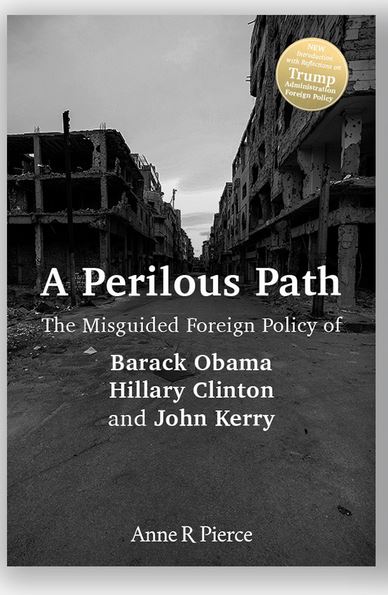When do peace plans make war more likely? When does respect for adversaries increase their disrespect for us? When does “non-proliferation” lead to a build-up of arms? When does compromise become capitulation? When does diplomacy for the sake of peace enable aggressors, human rights violators and sponsors of terror instead of rein them in?
When our priorities and our principles and our rhetoric are upside down.
American foreign policy today downplays American ideals and downgrades American power. The hope is that we can create a harmonious world if only we stop being arrogant and assertive, and find “common interests” with enemies as well as friends. But the world doesn’t operate that way.
What we see as outreach and cooperation, others see as weakness and naiveté. As we pare down our defenses and tone down our democratic principles, aggressive anti-democratic powers see this as an opportunity. The unfortunate result is a more hostile, more oppressive world. Policies designed to create peace, stability and unity end up having the opposite effect. Nowhere is this upside-down dynamic more evident than in the deal that the United States and the P5+1 powers just forged with Iran.
According to President Obama, there are only two ways of preventing Iran from obtaining a nuclear weapon and preventing an arms race: this deal or war. Yet, those objecting to the deal believe it will make war and an arms race more likely. They predict that Iran will use the massive funds it will receive via sanctions relief to clandestinely perfect its nuclear program, to sponsor even more terror and to incite even more proxy wars. They believe that when Iran emerges from the temporary “sunshine period” it will be in a better position to build a bomb than it is today under painful economic sanctions. They are alarmed by inadequate inspections, and by last-minute concessions regarding ballistic missiles and advanced weapons, concessions the administration promised not to make.
Our president has accused Republicans of finding “common cause” with Iranian hard-liners in opposition to this deal. Yet it is Congressional Republicans and some Congressional Democrats who question the administration’s rapprochement with Iran’s hard-line regime. They point to Iran’s sponsorship of terror, regional aggression, intractability and duplicity in negotiations, support of the brutal Assad regime, and crackdown on dissent. They speak out against the regime’s vilification of Israel and the United States, and repression of women and minorities. They pushed for stronger sanctions so that the U.S. could negotiate with Iran from strength, and opposed the lifting of sanctions in exchange for promises rather than evidence of non-proliferation.
Opponents see this deal as unnecessarily advantageous to Iran and, based on their celebrations and proclamations, Iranians do too. It unleashes more than $100 billions in frozen assets and lifts the arms embargo. U.N. inspectors must request written permission from Iran to inspect suspicious undeclared sites, and can be blocked from doing so for up to 24 days. U.S. inspectors, whose technological savvy is crucial, are not permitted to take part in inspections. Yet, Iran will receive American funding and technical assistance for its “peaceful” nuclear program. Uranium enrichment facilities at Natanz and Fordow, which are forbidden in multiple U.N. Security Council resolutions are now merely constrained (at Natanz) and delayed (at Fordow). Iran is given an 8-10 year roadmap for research and development on advanced centrifuges,”after the initial 10-year period” increasing its ability to build a bomb. The idea that “snapback” sanctions can be speedily enforced if Iran violates the deal has been dismissed by Iranian foreign minister Mohammad Javad Zarif himself.
Clearly, the Iranian regime’s power, influence, and capacity for troublemaking will increase. The deplorable Syrian Assad regime might regain ground as Iran, flush with cash, pours military resources into that country.
If the agreement decreases the likelihood of an arms race, why did President Obama (at Camp David), Secretary of Defense Ashton Carter (on a Middle East tour) and Secretary of State Kerry (in a follow-up summit with the Gulf Cooperation Council) campaign to reassure Middle Eastern partners nervous about Iran’s growing power? Why is the administration emphasizing its willingness to engage in greater security cooperation and share military capabilities, including missile defenses? Why have Saudi Arabia and other Arab states indicated that they will match Iran in nuclear capacity, and begun to ramp up military defenses? Why do recent Indian defense procurements show that it is preparing for a destabilized Middle East?
In introducing legislation that would prevent the implementation of the nuclear agreement, Chairman of the House Foreign Affairs Committee Ed Royce befittingly stated, “This deal gives up too much, too fast, to a terrorist state — making the world less safe, less secure and less stable.”
This article was originally published at USA Today on August 25, 2015. Read the full article here.


